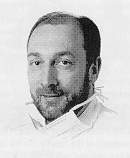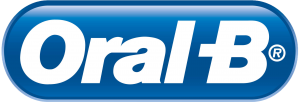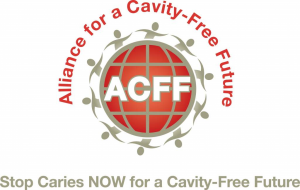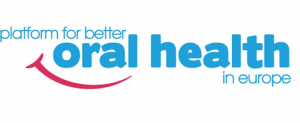
NEWSLETTER Number One March 1999
The Teaching of Paediatric Dentistry in Norway
Topical Anaesthetics
The NO Set
Abstracts
Advertising
 Dear Colleagues,
Dear Colleagues,
At the time you receive this newsletter, being the first of 1999, the EAPD board meeting will be prepared. On Friday March l9th this meeting will be held in BRUSSELS. Pending tasks will be discussed and new initiatives will be taken. After sending out all certificates we should finally decide on the identity cards. The prepared EAPD website should be discussed again and the board has to decide for the best use of the EAPD website. The EAPD Congress in Sardinia will be evaluated and we will focuss on the preparations for BERGEN 2000. The scientific programme is already wellprepared by Magne Raadal and we should now focus on the oral and poster sessions by the participants. We should pay attention to sponsorship in order to make the Congress as economical as possible and accessible for everyone.
Other important items for this boardmeeting will be the recognition of the speciality in Europe, and the consideration of a European Journal of Paediatric Dentistry. With respect to the latter almost all councillors are in favour of the development of a new journal.
The Educational committee has worked hard to finish their documents on the accreditation standards and by now councillors will be invited to send in their requests for the accreditation of programmes within their respective countries. Finally the board will decide on the composition of new working groups for the preparation of new policy documents. It's a certainty now that the next items will be x-rays in children, antibiotics in children and pit-and fissure sealants.
As promised in an earlier newsletter the guidelines for the `fluoride use in children' are almost finished. Constantine Oulis has prepared a new draft completely documented with the available literature, Magne Raadal and myself have revised this draft and a second draft will be prepared for the meeting in Brussels. The remaining remarks will be discussed and it will be decided to which journal the final document should be submitted.
In this interim year (i.e. a year without an EAPD Congress), the IADP Congress will take place. For most Europeans the location -LONDON- is easily reachable. During this Congress the EAPD council meeting for this year will take place and at that time all councillors are expected to attend.
Finally, I would like to inform you that all of the EAPD board members will be delivering lectures at the `International Symposium on Restorative Paediatric Dentistry' which will be organised by the Belgian Academy of Paediatric Dentistry on March 20th in Brussels. More detailed information is given in this newsletter.
Kind regards,
Luc C MARTENS
In the previous issue of Newsletter I described some major features of the organisation and practising of Paediatric Dentistry in Norway. This time I want to highlight on the teaching of this subject.
There are two dental schools in Norway, both organised as dental faculties under the University of Oslo and the University of Bergen respectively. Both faculties have similar undergraduate and post-graduate teaching in most of the dental disciplines. Even if some details are different between the paediatric dental departments in the two schools, the length and content of the curriculum are largely the same. I will describe how we teach Paediatric Dentistry at the University of Bergen.
The length of the undergraduate dental curriculum is 5 years, and Paediatric Dentistry is the last subject taught. The philosophy behind this is that our subject is based on knowledge and clinical skills from the other dental disciplines, adapted and applied to the specific age group. We therefore characterise Paediatric Dentistry as «total treatment», indicating that we too offer any kind of treatment to our patients. Nevertheless, in practice, we regularly need help from other specialised disciplines such as radiography, surgery, periodontics and endodontics when there are cases that need extraordinary elucidation or treatment. It is therefore feasible that the different clinics are located in the same building and not very far from each other, and that they all are organised as one single department.
The paedodontic curriculum comprises about 5O lectures, 25 clinical seminars and 150 hours clinical training during the last three semesters of the study. The topics taught are the following: cariology, traumatology, endodontics, orthodontics, periodontics, prosthetics, paediatrics, developmental disturbances of teeth, handicapped patients, behavioural science, pre-medication and general anaesthesia, all with relevance to Paediatric Dentistry. The clinical teaching is carried out in groups of twelve students with three teachers (dentists) for each group. The patients are children from 3 through 18 years of age, which is Group A (highest priority) in the Public Dental Service. Our patient population comprises about 3000 subjects in this age group, living in the neighbourhood of the faculty. As for all Norwegian children in this age group, the treatment is free of charge. Instead of belonging to a regional public dental clinic where authorised dental staff work, these children have been allocated to the dental school and dental students for treatment. Most parents are, however, satisfied with this arrangement, but we need to be constantly concerned about offering them sufficient service and quality of treatment to avoid dissatisfaction and complaint.
Most of the children are recalled for clinical examination once a year. The treatment is mostly caries prevention and therapy, but there are also many cases of traumatology, interceptive orthodontics and juvenile prosthetics. The undergraduate training in Paediatric Dentistry makes the candidates well fit for entering the Public Dental Service where dental care for children is their major duty.

The Dental School (right building) is situated at the campus among other medical buildings.
Postgraduate teaching
Paediatric Dentistry has been offered in our department since early in the 1970's. However, as explained in my presentation in the last issue of the Newsletter, the demand for this specialisation among Norwegian dentists has been very low, primarily because of the fact that the public service does not feel any need for it. In times when we have had the capacity for this kind of teaching, we have therefore admitted several candidates from abroad, and they have frequently combined the clinical specialised training with a master’ s degree. The clinical program is two years and a master’ s degree needs another year. In addition to Norwegian candidates, we have had candidates from Brazil, Philippines, Portugal, Sudan and Thailand. For the time being, we are admitting no candidates due to lack of resources.
Magne Raadal,
President Elect

The clinic for children's dentistry has twelve units
For many years we have used a 5% lidocaine gel for topical anesthesia before LA injections in children. However, recently we have imported 18-20% benzocaine formulas from USA for this, since their effect is much faster. Topicale has been the most popular of these. However, after the requirement of CE marking of medical devices to be marketed in Europe, and Topicale has no such mark, the producer cannot sell it here. Are there any other benzocaine gels on the market in Europe?
Magne Raadal
University of Bergen, Aarstadveien 17, N-5009 Bergen, Norway
(magne.raadal@odont.uib.no)
From a communicative point of view the yes-set is a well known concept. Creating a situation in which someone is more or less forced to agree several consecutive times, increases the relative chance that he or she will agree on the next question. The mechanism behind this is said to be a person's natural attitude to react in a positive way if a general positive feeling is already existing: a yes-set. In psychotherapy the concept is more or less the basis to start therapy: only if the goal of the therapy is mutually accepted and if there is a basic trust in the therapists skills, a treatment should start. Already in the first contact this positive attitude has to be created, to prevent the therapy from becoming a failure.
Very rarely the opposite of the yes-set is brought into the open: the no-set. In quite a similar way it is possible to antagonise someone so completely that very little of the therapy coming next will be effective. From a therapeutical point of view a no-set is not very effective (only in special cases like adolescents) and if a yes-set is sufficiently created and supported, the opposite hardly needs any discussion.
Lisanne (5 years) was referred because her dentist could not cope with her temper, as he wrote. Leaving unmentioned if the situation was caused by him, lacking the skills to handle the problem, Lisanne's dental anxiety, or her personal explosive style to cope with the dental situation, he sent her in. Lisanne did not seem to bother. Quietly she sat in the dental chair, waiting for things to come.
And things came. After the first conversation, the first introduction to dental treatment went extremely well, Lisanne was interested, happy and very obedient. The next session however gave a different picture: Lisanne was furious. She considered it a personal insult that her mother had not told or promised her anything in advance and worst of all: this dentist seemed to carry out the treatment he had announced last time. This was the ultimate outrage. After the treatment she did not speak to her mother for half a day.
In the consecutive treatment sessions things improved gradually. Lisanne walked quietly to the treatment room, climbed and sat in the chair as she was asked to, and accepted the local anaesthesia without any complaint. She only turned on the waterworks as soon as treatment took a start. Very monotonously she cried from the beginning to the end. Only if there was a question or an announcement that seemed to draw her attention she stopped, continuing her crying as soon as she lost interest. On every question or remark she said `no', even in case nothing was asked. Every time the dentist announced a treatment step she said no, consecutively accepting it. The dentist announced the rubber dam: Lisanne said no. The dentist announced the excavating: Lisanne said no. The dentist asked his assistant what to do next time and before she could answer Lisanne cried: Nooo.
"What if I'd offer her a candy bar, do you think she would refuse also" he asked his assistant? She was advised to give it a try. "Lisanne," he continued, "shall we make a nice white and bright front tooth, next time?" He was rewarded: Lisanne took a deep breath and refused with all her energy. The setting was there. "Do you prefer a white chocolate bar instead, Lisanne?" Lisanne took a deep breath, her face turning into the same angry expression as a few seconds earlier, only at the moment the words should have started, something blocked the process. Halfway, the air stopped in her throat and amazed she turned to the dentist. When the dentist just sat there, without repeating his offer or insisting, she took up her old routine, leaving the candy bar somewhere in the air
Jaap Veerkamp
Relationship between malocclusion and craniomandibular dysfunction in children and adolescents: a review
Vanderas A.P. Pediatric Dentistry 1993;15:317-322
The purpose of this study was to review the literature with respect to the relationship between malocclusion and craniomandibular dysfunction. Cross-sectional and longitudinal studies were reviewed. Craniomandibular dysfunction was defined by the presence or absence of one or more signs or symptoms recorded in each investigation by a clinical examination and an interview/questionnaire. The results were interpreted by applying the epidemiological approach of `necessary and sufficient' which implies that there must be a one-to-one relationship between a factor and a disease.
Some of the reviewed studies showed that certain occlusal conditions such as unilateral contact, anteriorposterior distance between retruded and intercuspal positions and lateral deviation of the mandible are correlated significantly with certain signs and symptoms of craniomandibular dysfunction. However, other studies reveal no significant correlation. If the correlation between malocclusion and craniomandibular dysfunction were a one-to-one relationship, one would expect to see significant correlations reported consistently.
The lack of consistency and strength of the reported correlations does not support causality. On the basis of the evidence provided by this study malocclusion cannot be considered a necessary and/or sufficient etiological factor of craniomandibular dysfunction. The conclusion was that early treatment of occlusal conditions to prevent the development of craniomandibular dysfunction is not justified scientifically.
Malocclusion and craniomandibular dysfunctions were once thought to be linked in a cause and effect relationship. However, studies on malocclusion and craniomandibular dysfunction have not borne out that relationship.
No longer is malocclusion considered as a primary etiologic factor of craniomandibular dysfunction. Therefore, adjustment or alteration of malocclusion to prevent craniomandibular dysfunction is not considered an appropriate approach.
Relationship between malocclusion and bruxism in children and adolescents: a review.
Vanderas A.P., Manetas K.J. Pediatric Dentistry 1995; 17: 17-12
The objective of this study was to review the literature regarding the relationship between malocclusion and bruxism. Cross-sectional and longitudinal studies were reviewed to define the causal relationship between different types of morphologic and functional movements of the mandible with or without audible sound occurring during the day or night. The diagnosis of bruxism was performed either by a clinical examination, and interview/questionnaire or both. The clinical indicators of this parafunction were the presence of dental wear/attrition and bruxofacets. The historical indicator of bruxism was grinding or clenching reported by the subject or parent during the interview or on the questionnaire.
The results of the reviewed studies showed statistically significant correlations between different types of morphologic malocclusion such as Class II and III molar relationship, deep bite, overjet and dental wear or grinding. The types of functional malocclusion correlated with dental wear or bruxofacets were mediotrusion interferences, anterior-posterior and vertical distance between retruded position and intercuspal position, lateral shift of the mandible together with non-functional side interferences. However, only cross-sectional studies reported significant correlations between malocclusion and bruxism implying that the correlations were investigated at a certain point of time. The results were not confirmed by the longitudinal studies. Besides, the correlations were found in different age groups and the type of malocclusion that correlated with bruxism was not the same in all studies. Finally, the reported correlations cannot have biological significance since the biological plausibility of the causal hypothesis cannot be inferred. The conclusion of this study was that malocclusion does not increase the probability of bruxism and therefore, early treatment of occlusal conditions to prevent bruxism is not supported scientifically.
The study provides a critical evaluation of the literature on the link between malocclusion and bruxism. It was initially believed that malocclusion causes bruxism. However, this hypothesised cause and effect relationship has no grounds on the basis of the results of the above study. Therefore, alteration of malocclusion to prevent bruxism has to be avoided.
Lisa Papagiannoulis
Athens University, Greece
Announcement of the Annual Meeting
of the Society for Pediatric Dentistry and Primary Prophylaxis
The Annual Meeting of the Society for Pediatric Dentistry and Primary Prophylaxis together with the Psychology Study Group and the Dental Association Mittelfranken (Middle Franconia) will take place on October 15-l6th 1999 at the University of Erlangen.
Scientific Chairperson: Professor Anseelm Petschelt PhD
MAIN TOPICS
1. Psychological aspects in preventive dentistry
Keynote presentations:
Dr. Makuch, PhD (Leipzig)
Prof. Ettrich, PhD (Leipzig)
Dr. Magri (Zurich)
2. Minimally invasive restorations Keynote presentations:
Keynote presentations:
Prof. Reich, PhD (Homburg/Saar)
Dr. Hugo (Wurzburg)
Dr. Kraemer PhD (Erlangen)
3. Workshops:
Communication and prophylaxis.
Behaviour therapy with oral parafunctions.
Abstract forms available at:
http://www.dent.uni-erlangen.de/
PD Dr. Norbert Kraemer
(Secretary of the Society for Pediatric Dentistry and Primary Prophylaxis)
PD Dr. Norbert Kraemer
Poliklinik fuer Zahnerhaltung und Parodontologie
Glueckstr. 11
D-91054 Erlangen
5th Congress of the
EUROPEAN ACADEMY OF PAEDIATRIC DENTISTRY
7th to 11th June 2000
SAS RADISSON HOTEL NORGE
Bergen - Norway
Professional Organiser: Travel Planners of Scandinavia
AS Walckendorffsgate 9
N-5012 Bergen
Norway
Tel: + 47 55 23 00 70
Fax: + 47 55 23 17 68
E-mail: travelpl@online.no
WWW-page: http://www.fou.uib.no/EAPD2000/
Free papers
Researchers and clinicians are welcome to present papers (oral, poster or video presentations) of any topic relevant to paediatric dentistry.
Deadline for submission of abstracts: 1st February 2000
LONDON 1999
17th Congress of the International Association
of Paediatric Dentistry
2nd to 4th September 1999
Thursdav 2nd September
Introductory Lecture: THE CHILD IN TODAY'S WORLD Professor Alan Craft UK
Prize and Award Presentations
WELCOME LUNCH
The Developing Child in the Developing World
Professor John Brown USA Dr. Peter Cleaton Jones South Africa
Professor Anna-Lena Hallonsten Denmark, Professor Sven Poulsen Denmark Professor Andy Blinkhorn UK
Fridav 3rd
CHALLENGING BEHAVIOUR
Child Psychiatry Prof Ann Le Couteur UK
Meeting the Challenge of the Challenging Child Dr Tom Shakespeare UK
The Clinical Challenge: Erosion Dr June Nunn UK, Dr Elizabetth Sullivan UK
Caries Diagnosis Professor Nigel Pitts UK, Dr Margaret Woodward UK, Dr Peter C Phillips UK
Challenging Behaviour: Sedation -TheClinical Answer? Ur John Meechan UK, Dr Stephen Fayle UK, Prof'essor Martin Curzon UK
THE TRANSCULTURAL CHALLENGE
High Risk Children Prof. Raman Bedi – UK
Transcultural Challenge Professor Sonia Williams - UK
Selected speakers from Ukraine, Poland and Russia will address Transcultural Issues
Oral Presentations
Saturday 4th
Education in Paediatric Dentistry in the 21st Century Dr. Goran Dahloff Sweden, Dr. Luc Martens Belgium, Dr. Don Kohn USA, Professor Alan Brook UK
Clinical Solutions in the 21st Century. Implants in Children - Clinical practice and future developments
Dr. David Harris Ireland, Dr. Neil Meredith UK, Professor Yuri Kirol Sweden
Meeting the Challenge - The Interdisciplinary Approach. The Management of Children with Cleft Lips and Palates Dr. June Crown UK, Mr. Brian Sommerland UK, Ms Debbie Sell UK, Dr Jottathan Sandy UK, Dr David Bearne UK Professor Bill Shaw UK
Future Perspectives for Clinical Care Professor Kevin Donly USA, Dr Joel Berg Professor Ted Croll USA
Oral Presentations
Poster Presentations And Exhibition
PRE-CONGRESS SYMPOSIUM - Recent Advances in The Treatment of Traumatic Dental Injuries
Wednesday 1st September St Ermins Hotel, Westminster
Further Information
17th IAPD 1999 Concorde Services Ltd Professional Conference Organisers
10 Wendell Road London W12 9RT UK
Tel: + 44 (0) 181 743 3106
Fax:+ 44 (0) 181 743 1010
E-mail: mailto:csluke@compuserve.com



